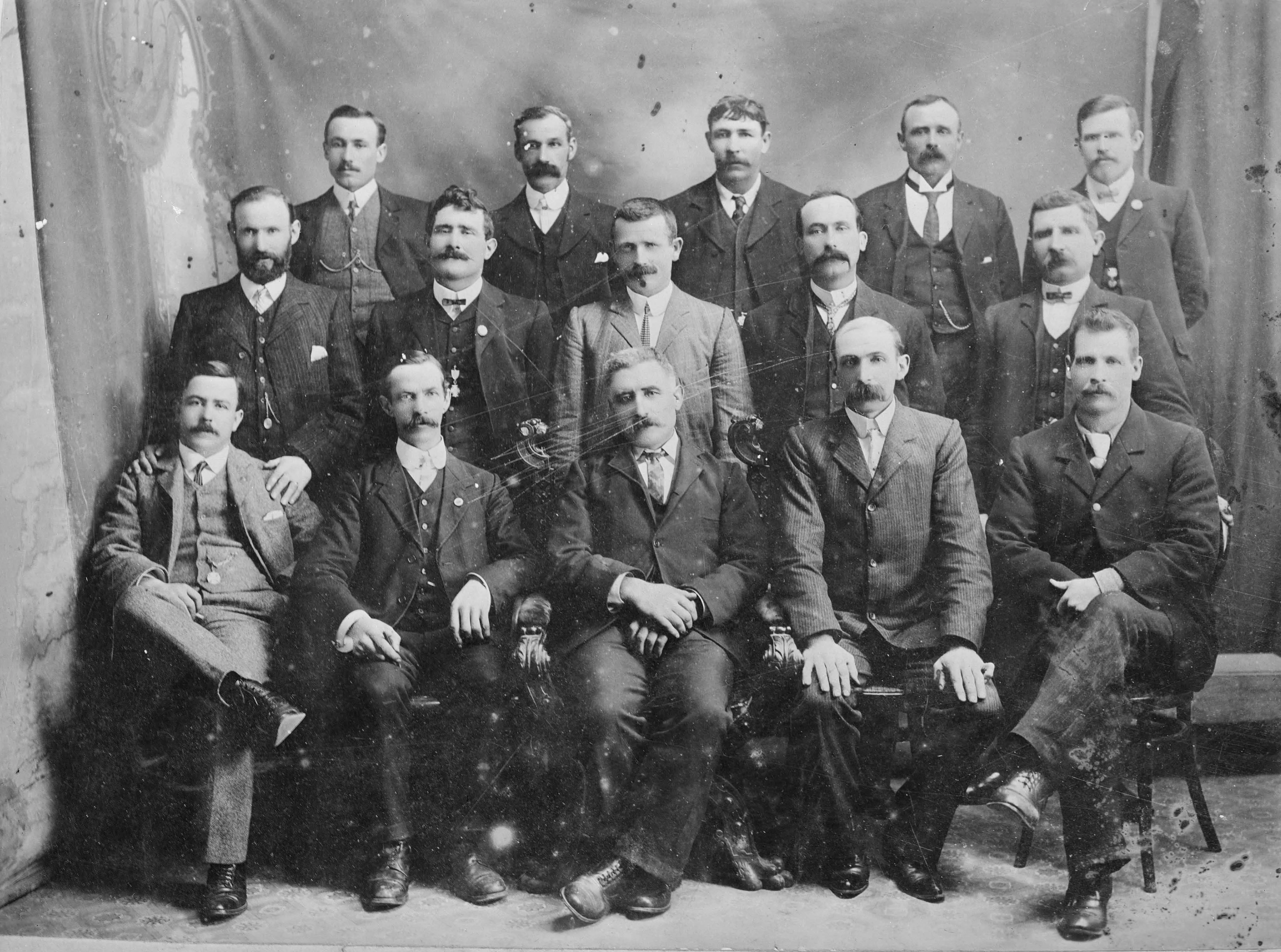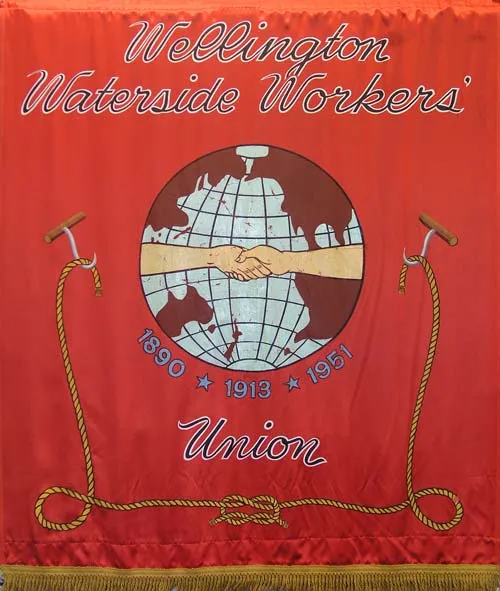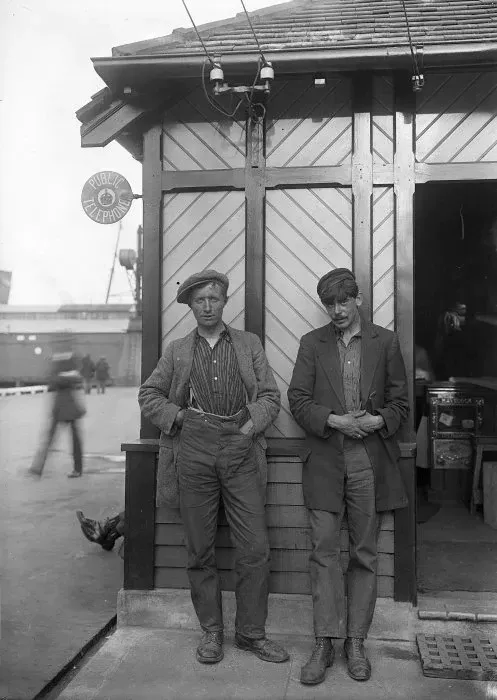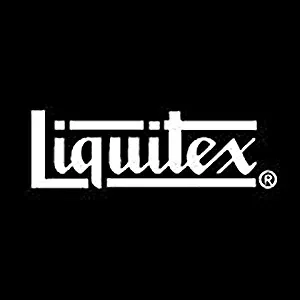A mighty memorable mural
Written by
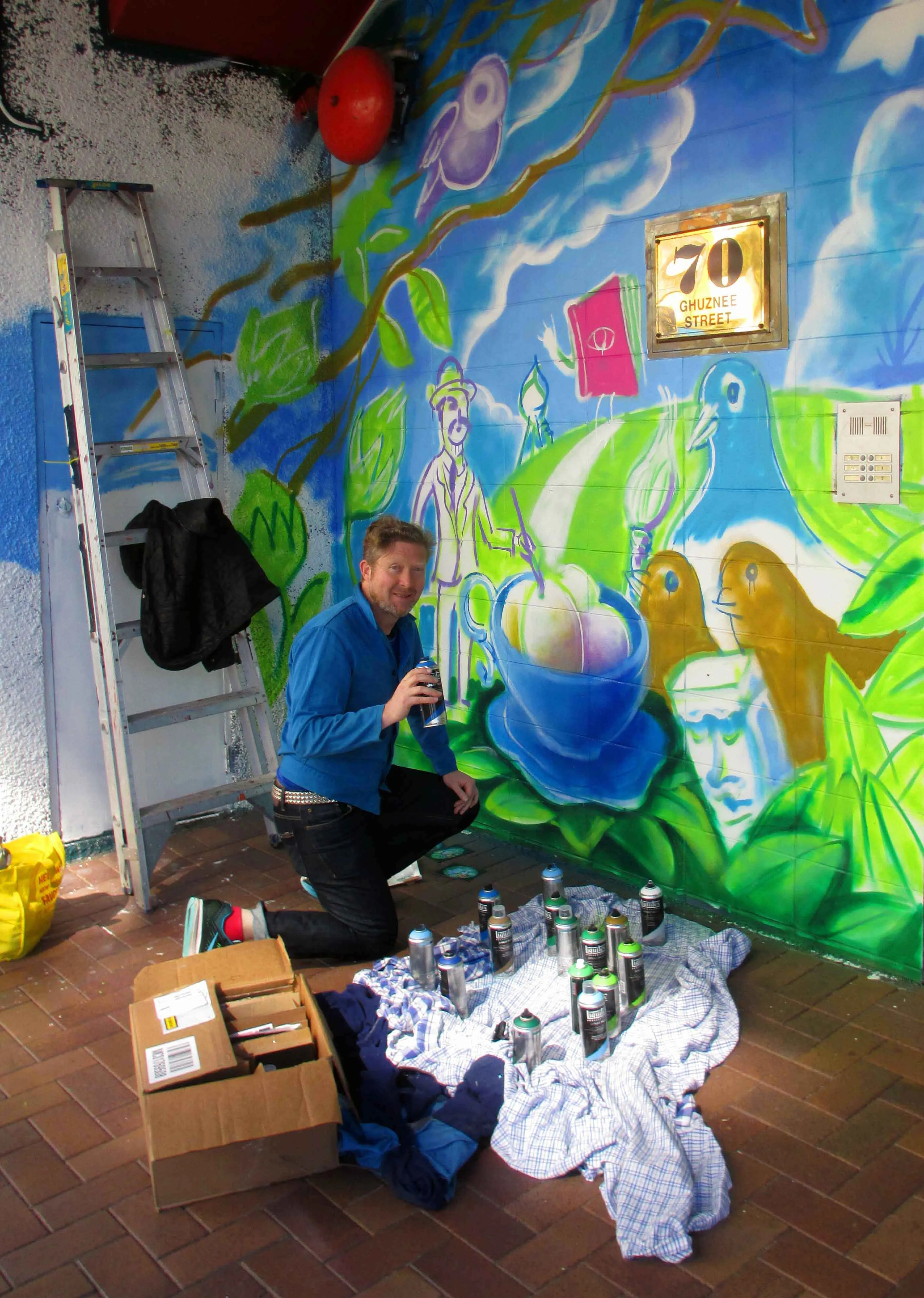
The French Art Shop’s manager Renee Gerlich writes on their new murals, which promise to brighten every visit to Ghuznee Street and Glover Park.
If you ever wander Ghuznee Street, perhaps to Customs Café, Milk Crate, Bodega or the Wellington Apothecary – or to kick back with a bevvy and a beanbag at Rogue and Vagabond – make sure to check out The French Art Shop’s sprightly, brand new mural. Painted by local artist and illustrator extraordinaire Stephen Templer, the mural will surely brighten your visit. At first glance it is colourful, if a little cryptic; but this picture tells a mighty memorable tale.
The mural is a celebration of Wellington’s arts community, as well as some of its earliest and staunchest trade unionists, the Wellington wharfies. In particular it remembers Lewis Glover, after whom Glover Park on Ghuznee Street is named. Glover served many years as president of the Wellington Watersiders’ Union as well as the national waterfront workers union. Templer has painted Glover, and next to the apartment entrance at number 70, a ship at sea under bright red flag reading ‘WWU’.
As New Zealand signs the TPP Agreement whilst commemorating the battles fought for democracy by soldiers conscripted into World War One, it is a fitting time to remember the current and historic struggles of our workers’ rights advocates and trade unions. Glover was a persistent advocate for improved working conditions, fair wages and secure employment.
In the mid-nineteenth century, New Zealand’s central and provincial governments were elected by landowners. In the workforce, sweating and child labour were common, as well as long hours and low wages, poor healthcare, discrimination, casualised labour and unemployment. Workers were forced to organise into unions to improve the conditions they faced.
“During those years,” says Maritime Union assistant secretary John Whiting, “unionism had a strong hold in New Zealand, especially on the waterfront, the coal mines, the seafarers – they’ve always been unionised industries.”
Wharfies did hard, manual labour transporting cargo from ships to the wharves and to horse-drawn transport and steam rail – and they formed large, staunch unions.
Lewis Glover, Glover Park’s namesake, was first elected to WWWU vice-presidency in 1912, and the following year the watersiders engaged in a dispute that contributed to the escalation of New Zealand’s 1913 Great Strike. 15,000 workers (out of a total population of 1 million) participated in the nationwide strike, and Glover was appointed chair of Wellington’s strike committee following the arrest of his predecessor. He was also the union delegate to the two 1913 conferences that led to the 1916 formation of the New Zealand Labour Party (Peter Fraser, one of our first Labour Government prime ministers, had been a wharfie as well).
Glover passed away in the 1960s after living in and around central Wellington for over sixty years, including in Mt Cook, Manners Street, Vivian Street and Molesworth Street. “As an inner-city resident,” writes Mark Darby, “he would have observed the worst of Wellington’s housing, and the need for open spaces for rest and recreation.”
So in his will, Lewis Glover left 27,000 pounds (about $1 million today) to the Wellington City Council “for use in or towards the establishment of a park within the vicinity of the City to be used for recreation purposes”. Glover Park opened in 1971.
The French Art Shop’s new mural also remembers two other significant bequests (see if you can find the references!): Glover left his bicycle to the chairman of the council’s transport committee, and his false teeth were given to the town clerk.
While, as far as we now know, Glover was not a painter, he was certainly a visionary. So in the French Art Shop’s new murals, artist Stephen Templer has pictured him paintbrush in hand, working to realise his vision for an inner-city park for the workers he so respected, and for everyone who lives in this place.
Sources: Mark Darby’s The Story of Glover Park, Raewyn Martyn’s Dreamy City Without Green Spaces, William Sutch’s The Quest for Security in New Zealand, Te Ara Encyclopaedia of New Zealand, and an interview with Maritime Union assistant secretary John Whiting.
Thanks to Liquitex spraypaints.
